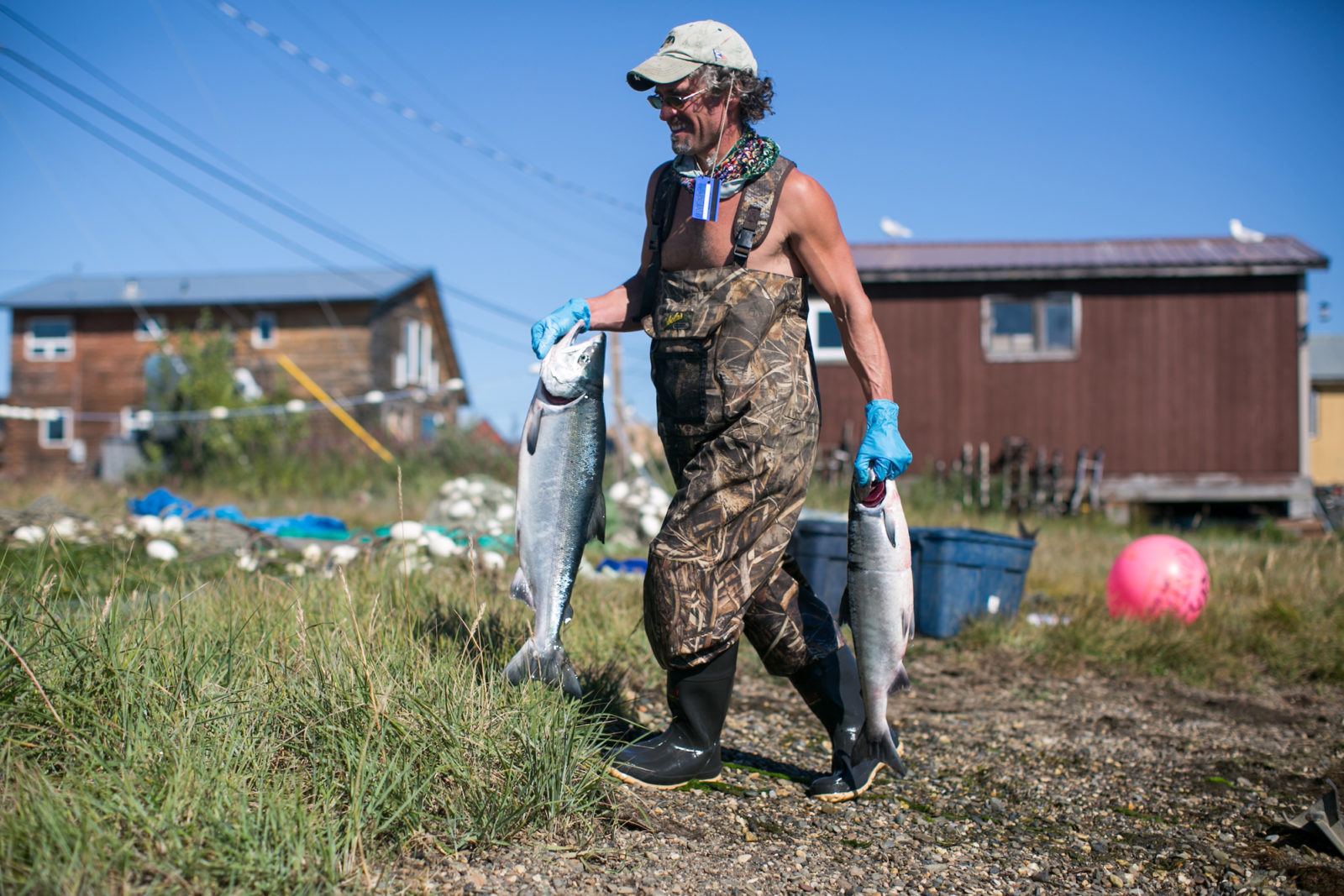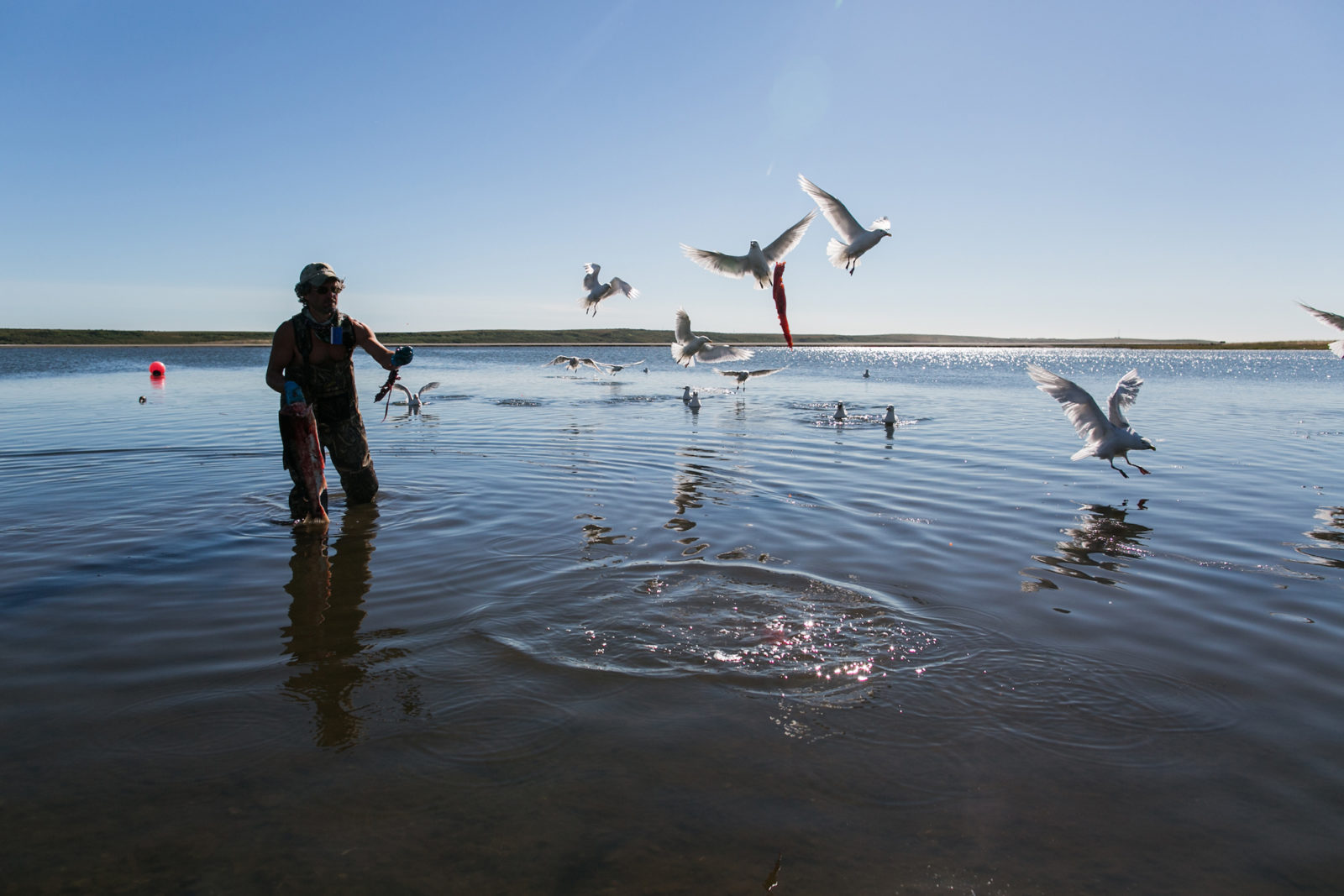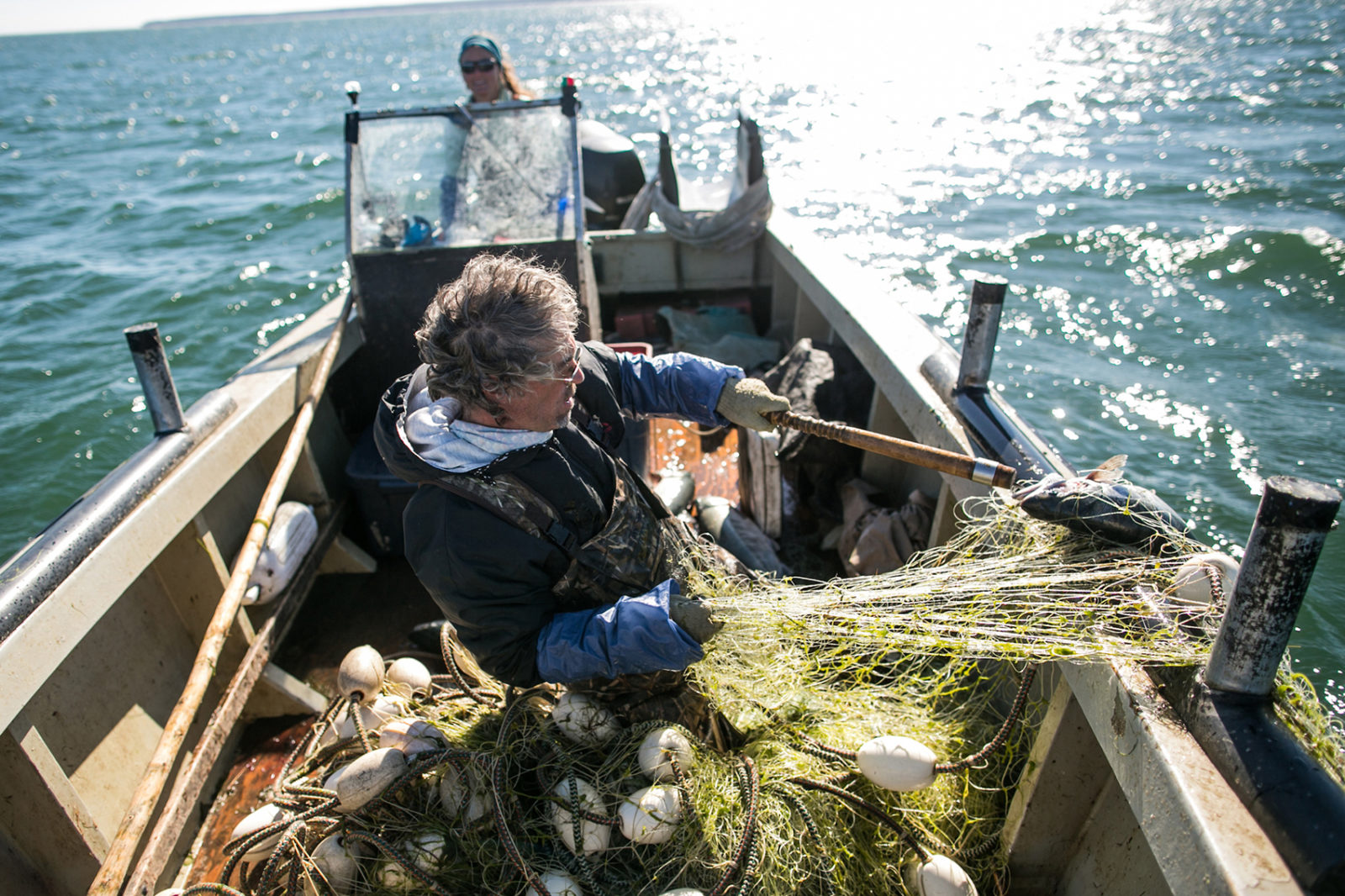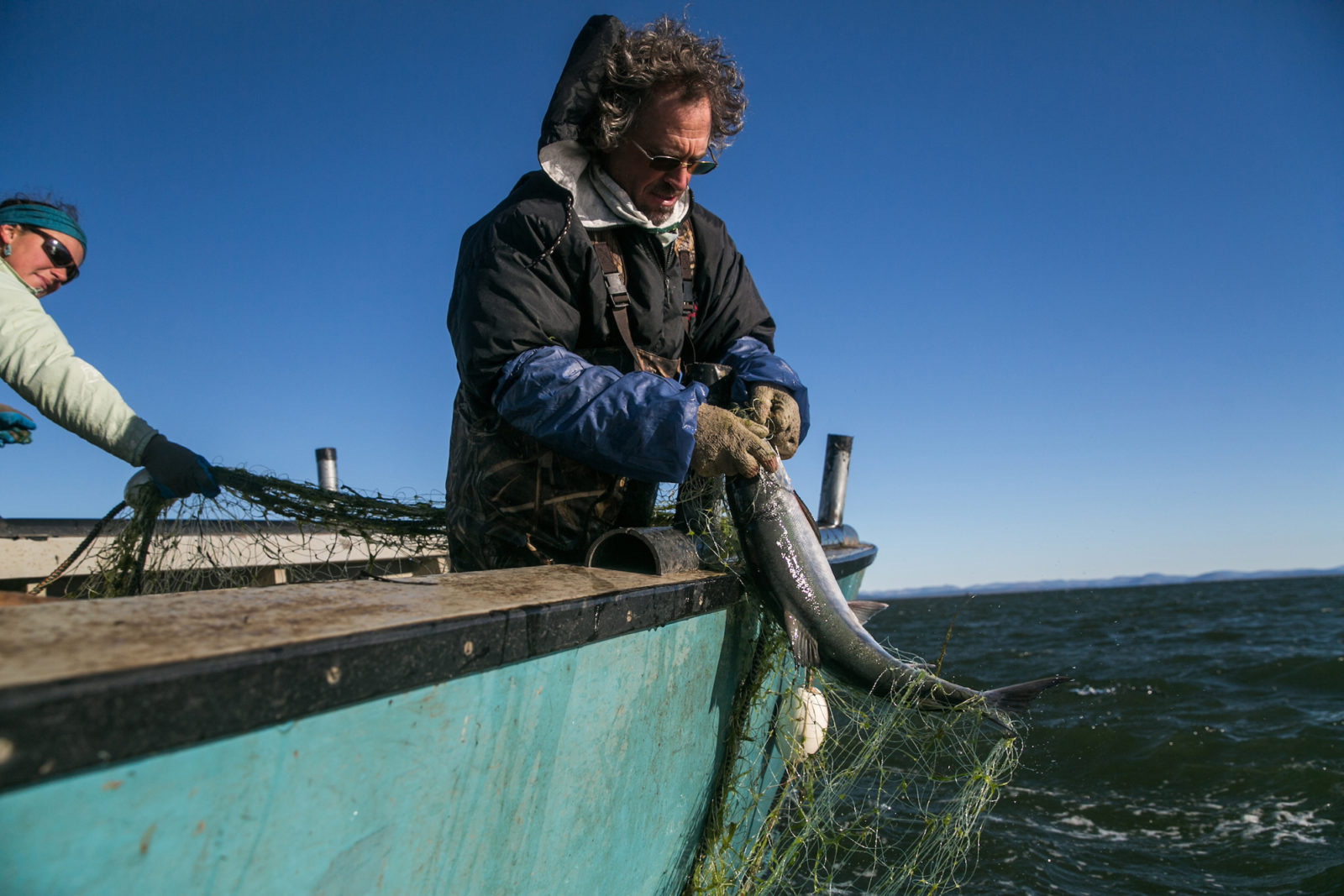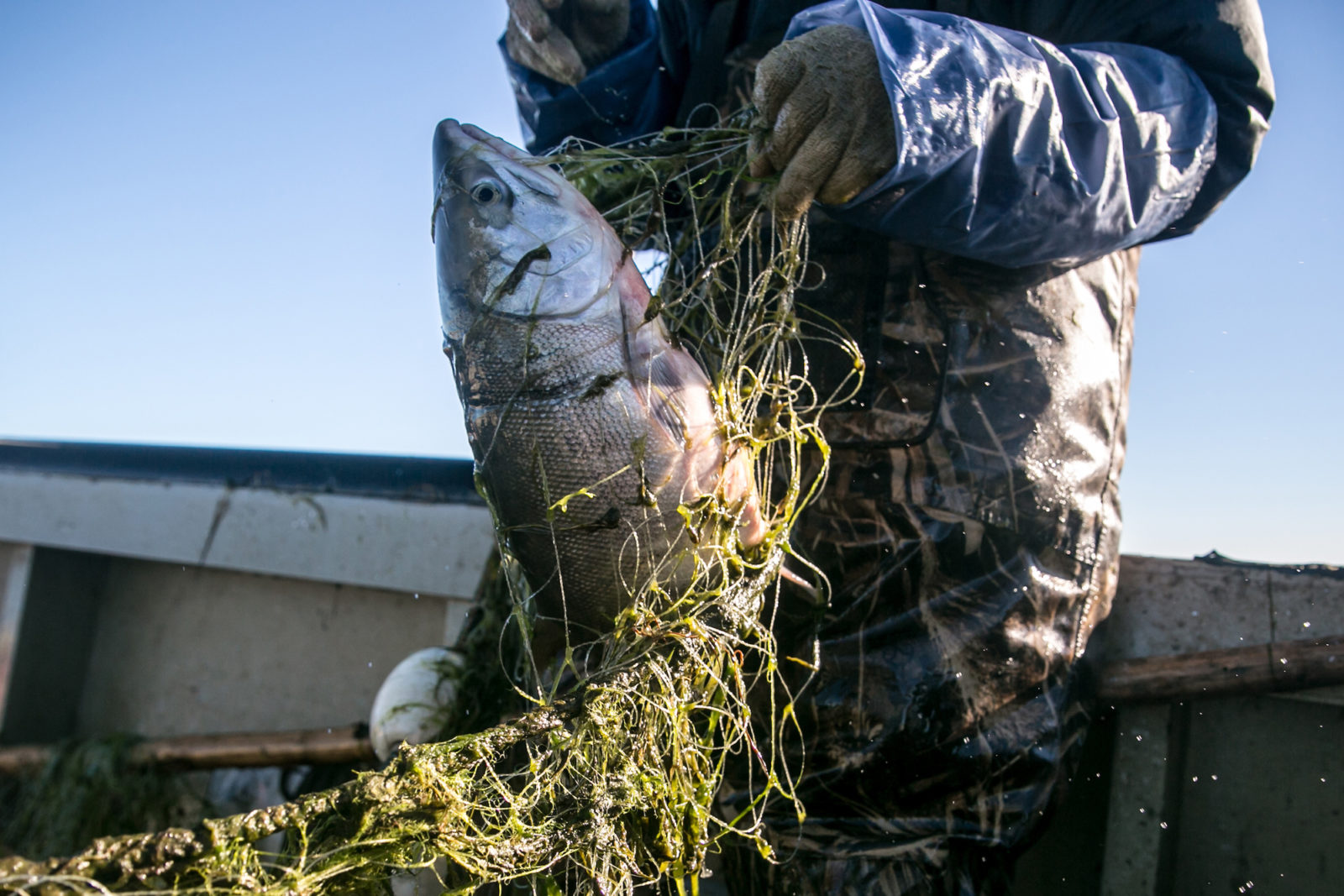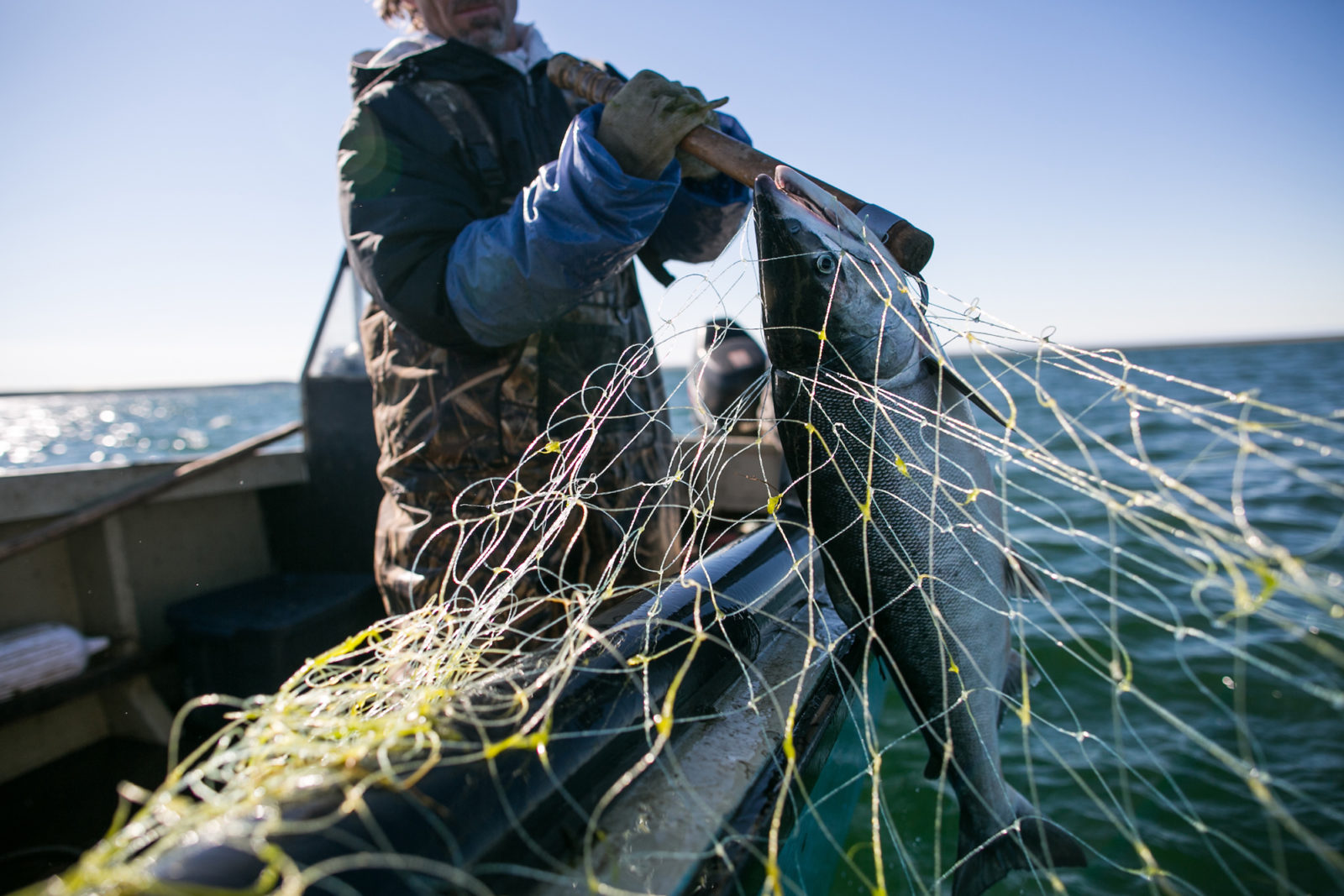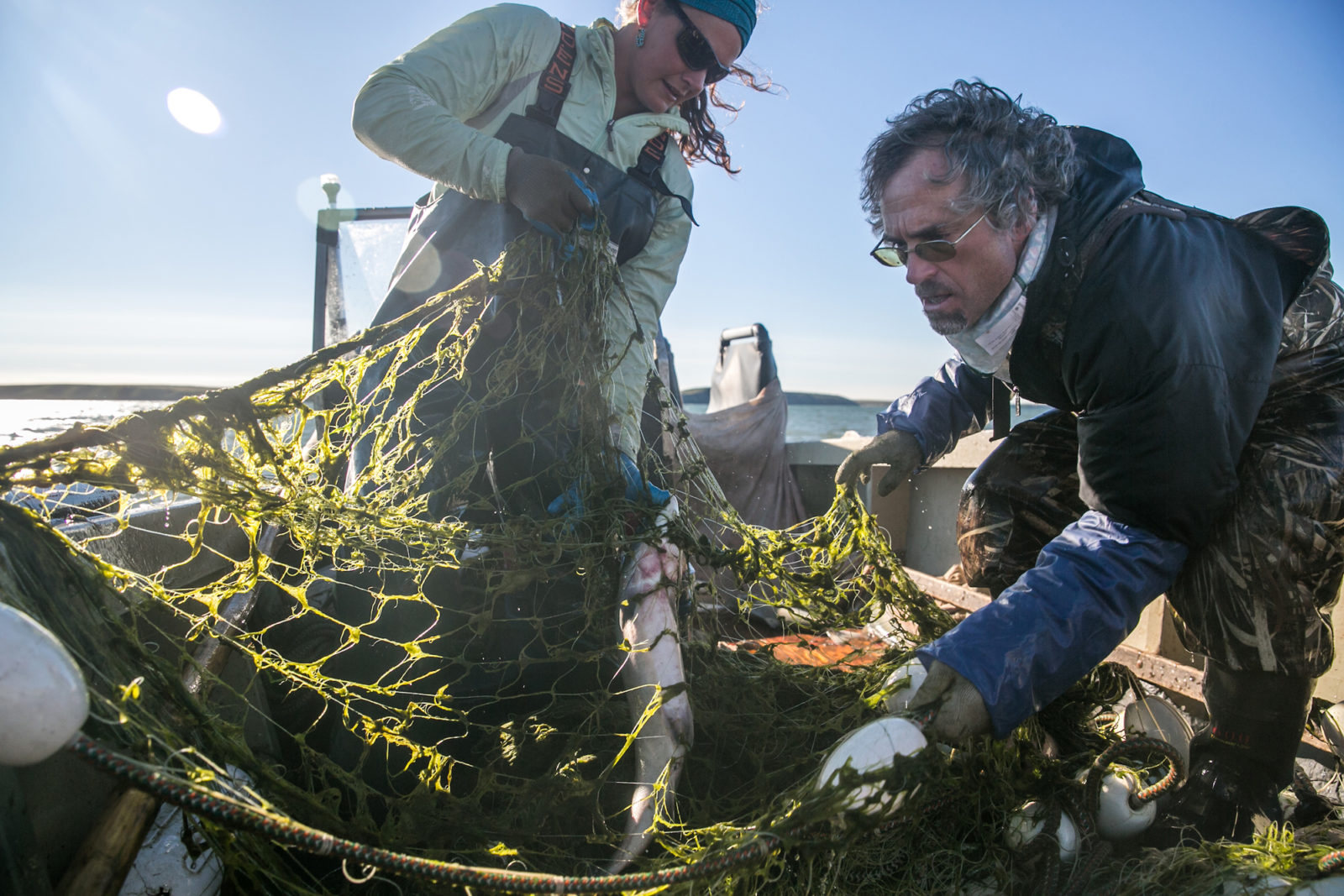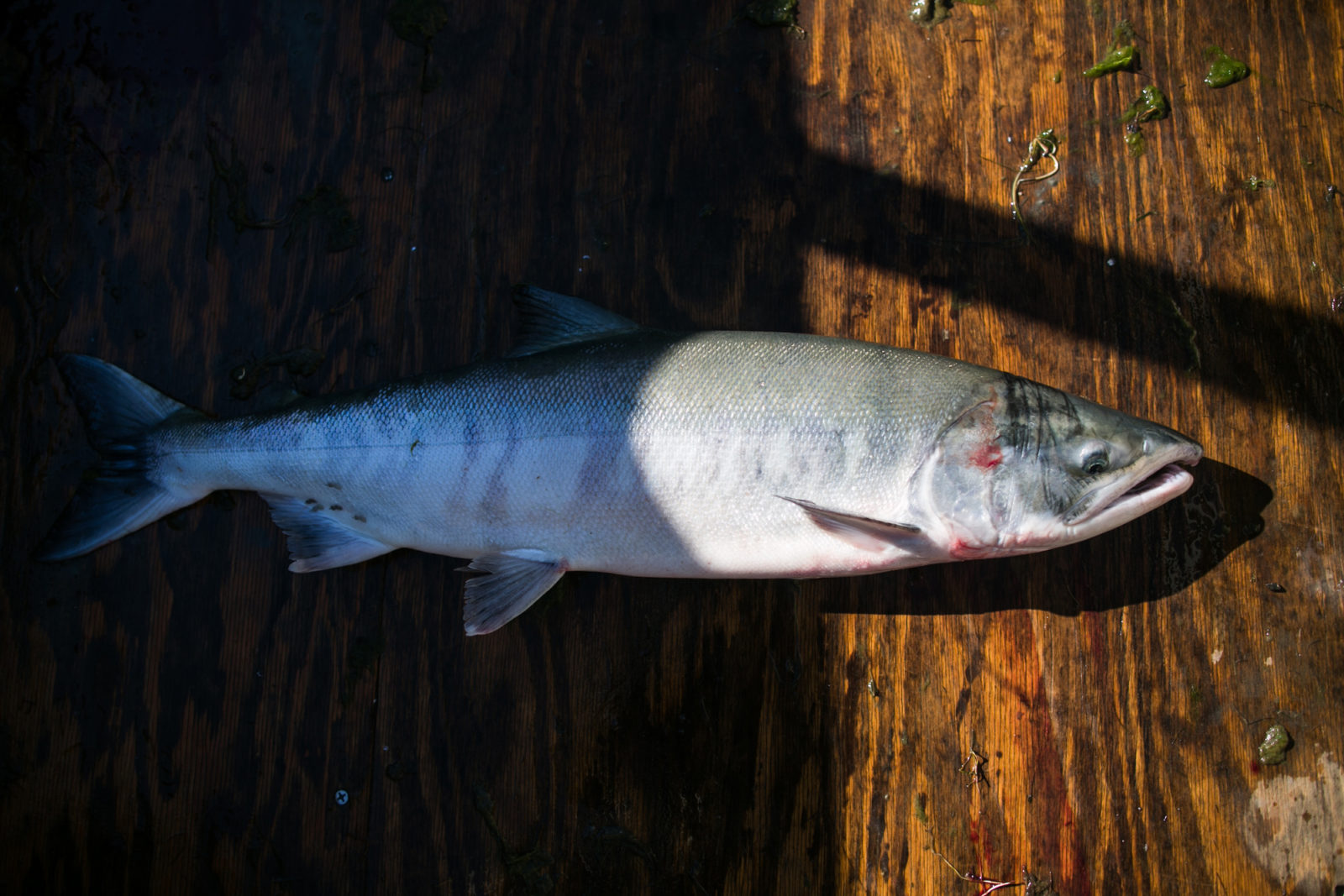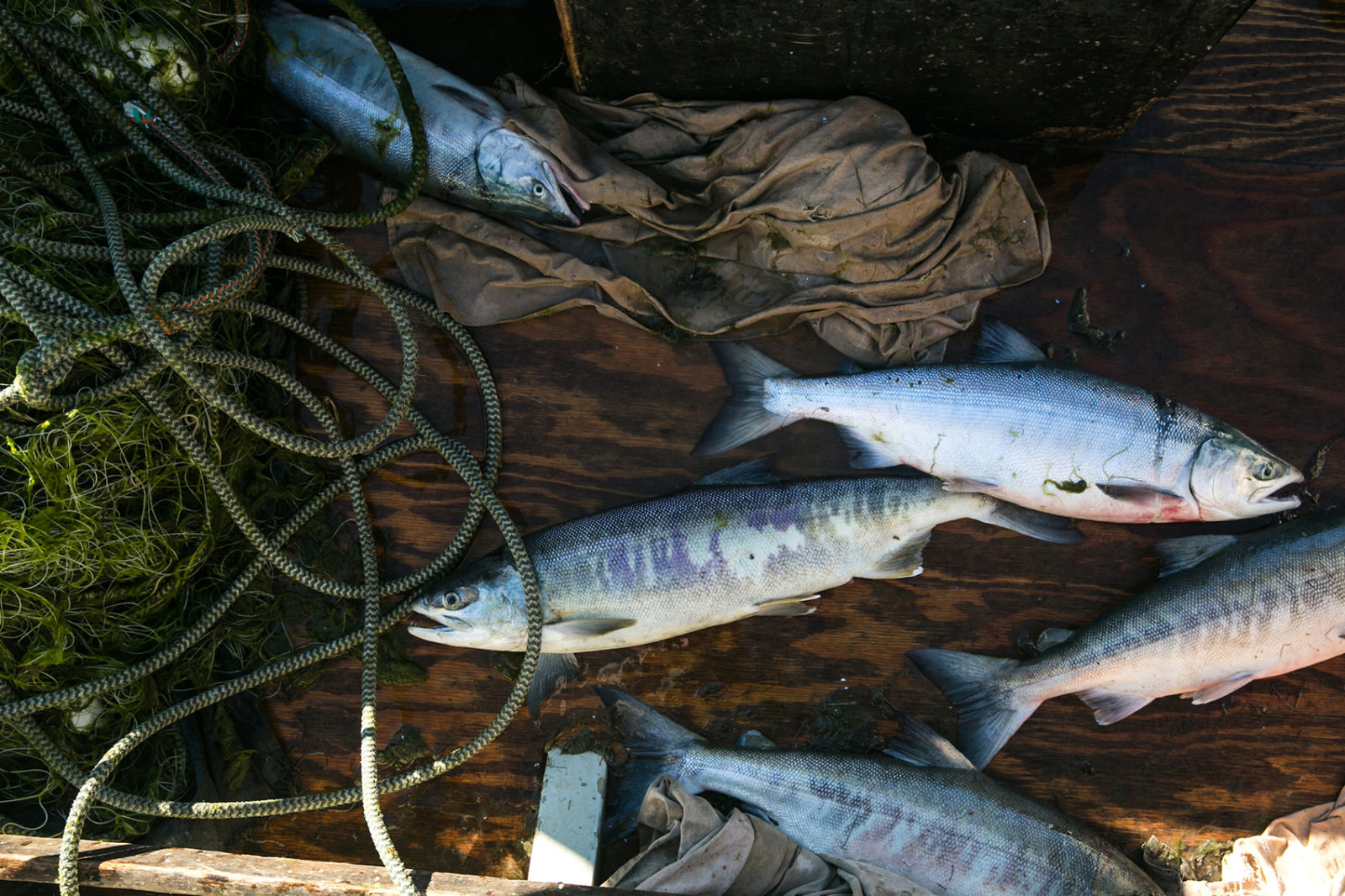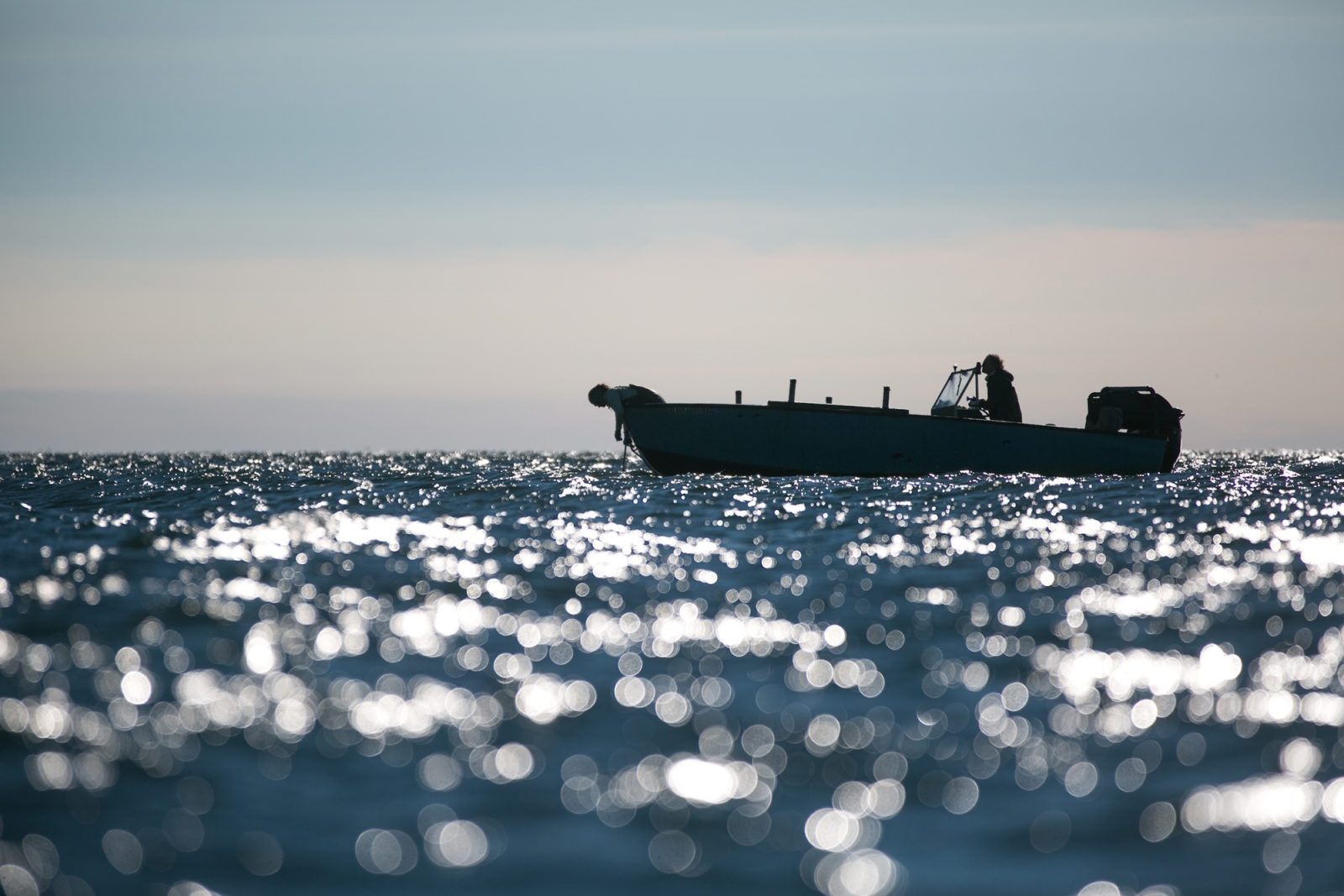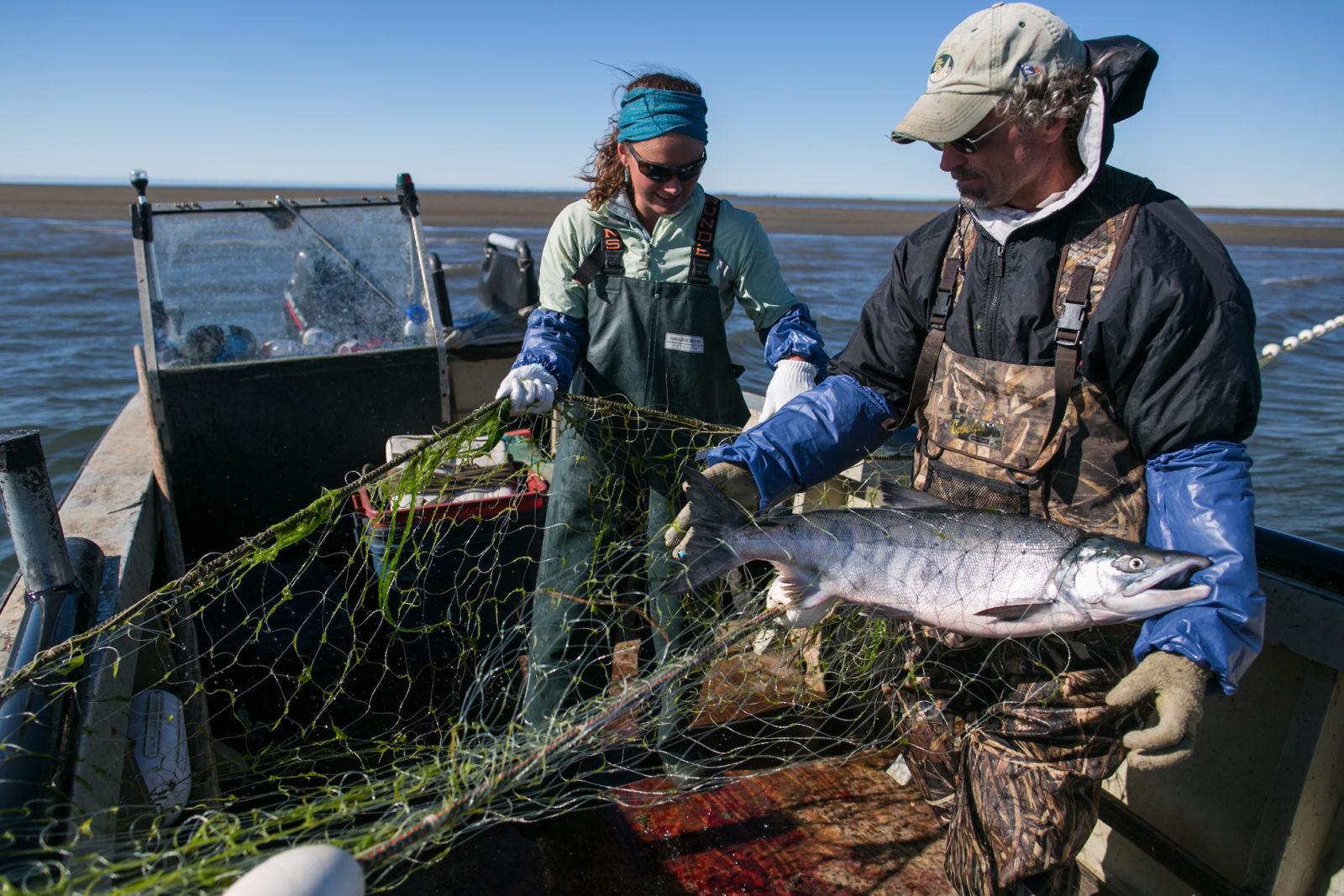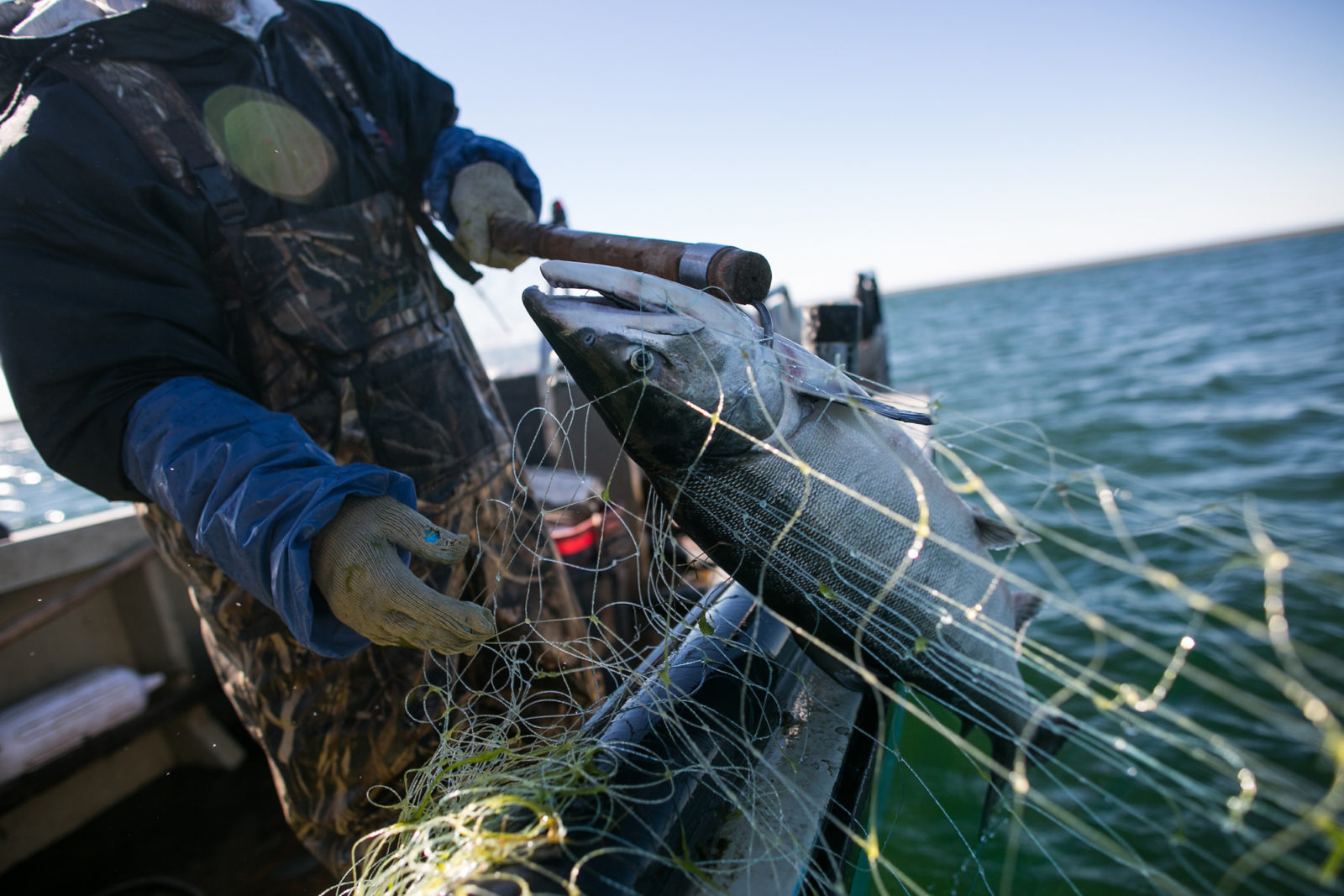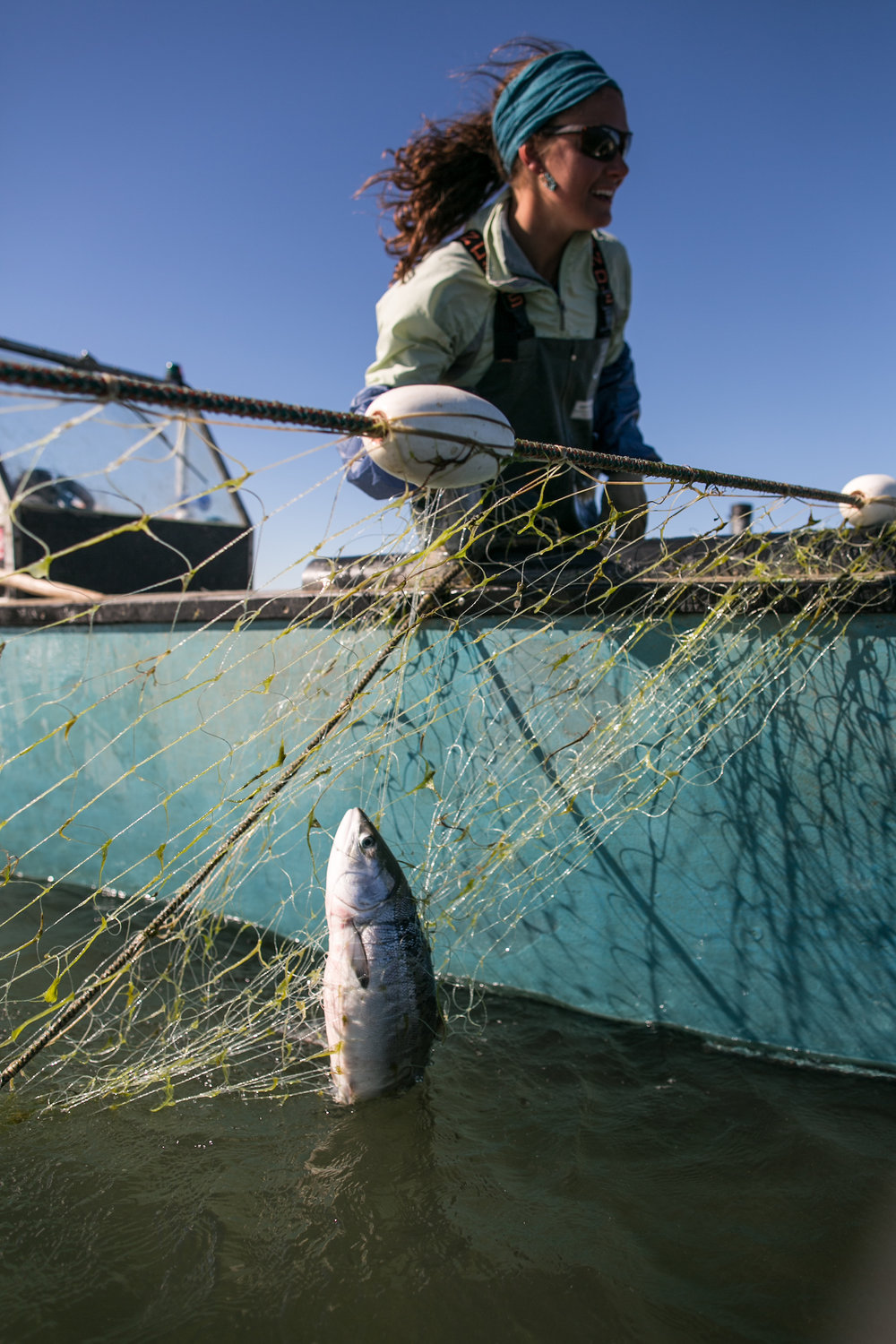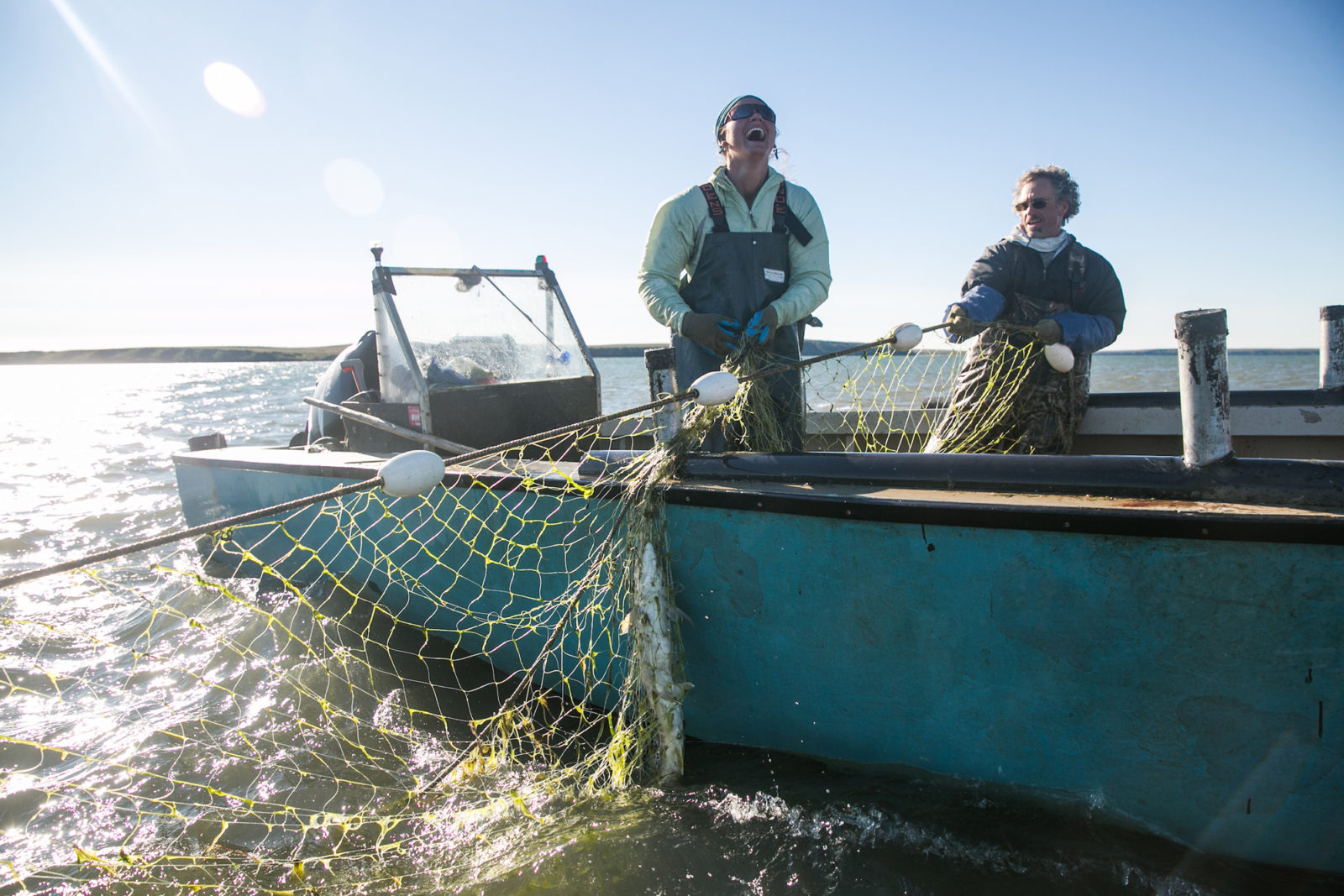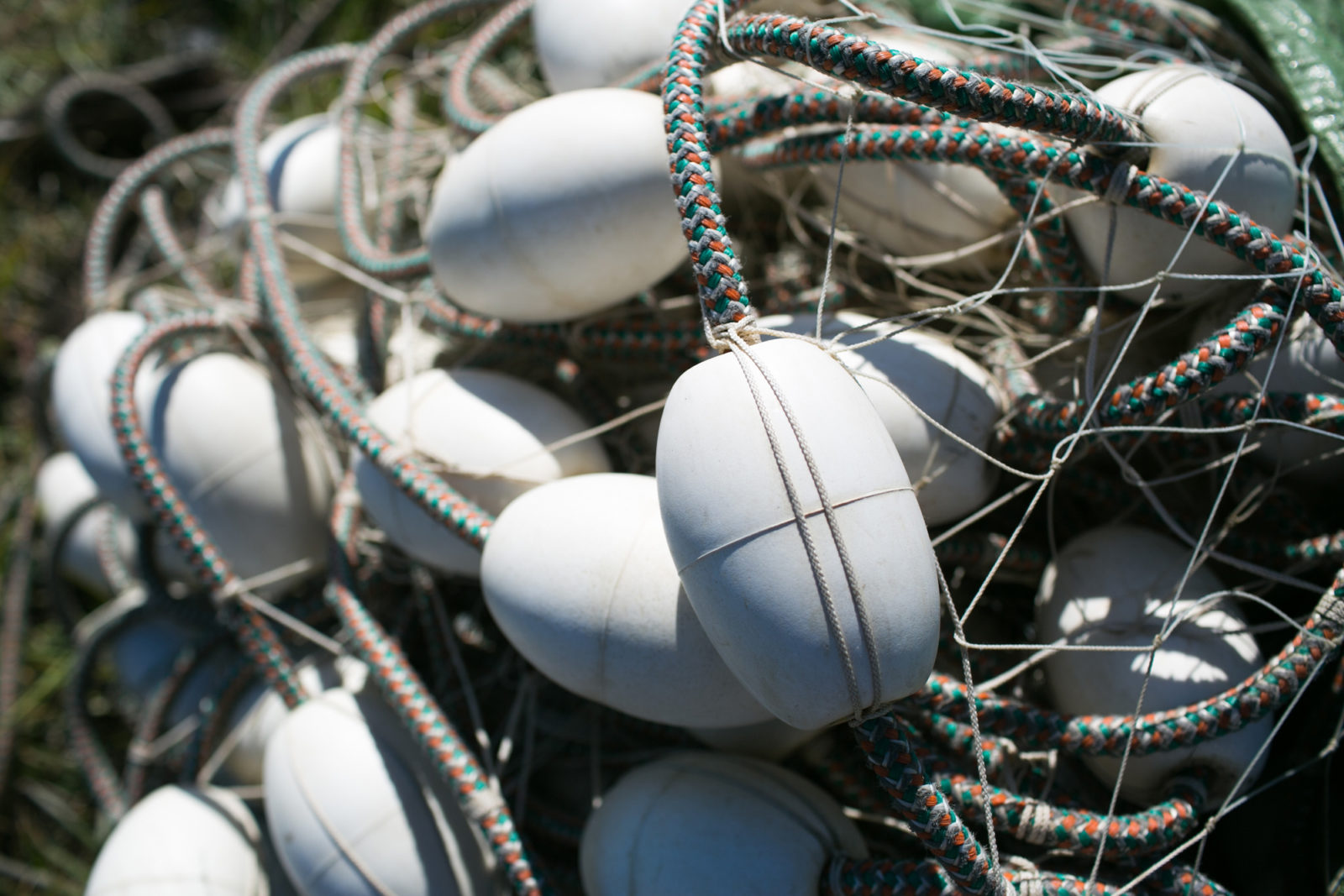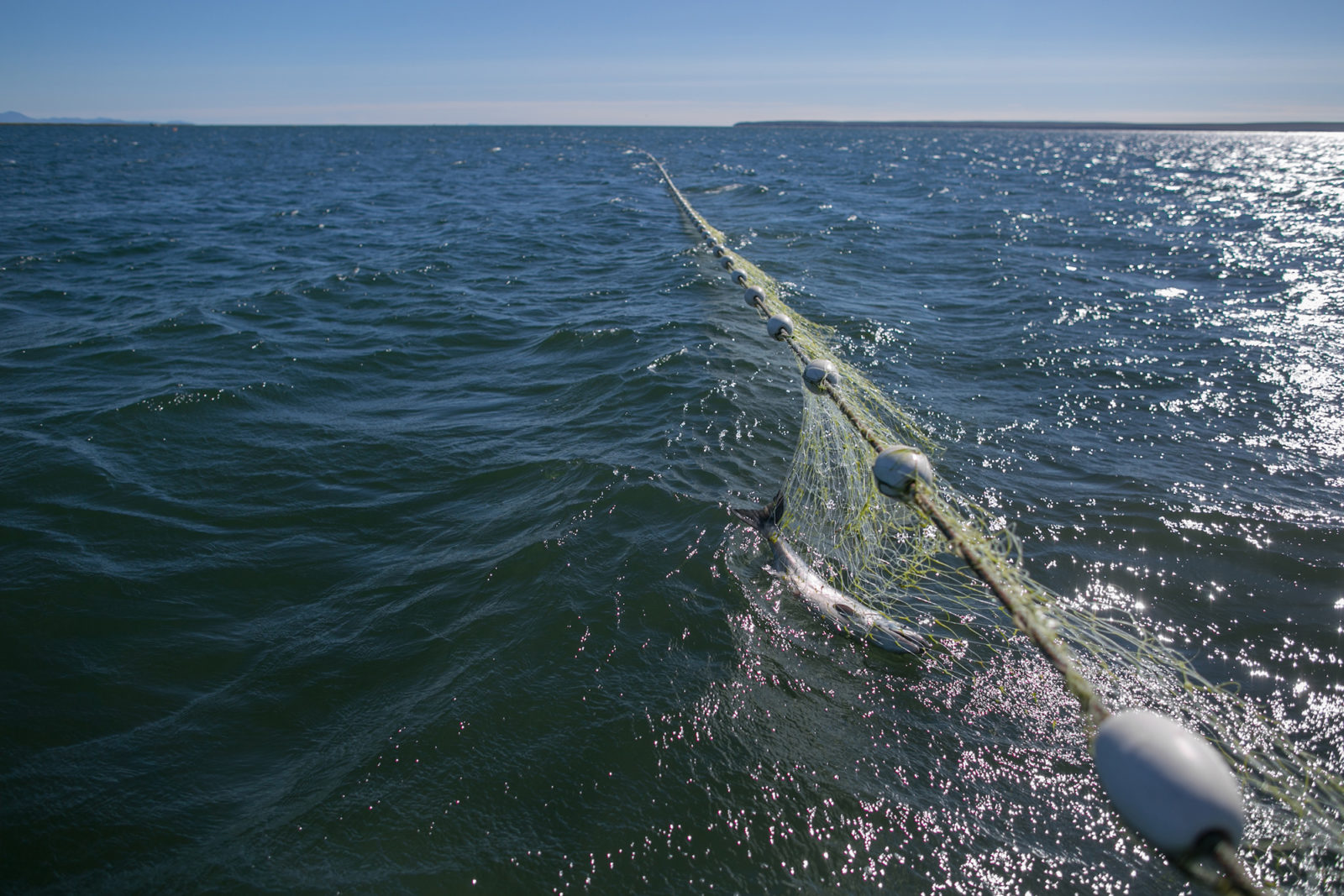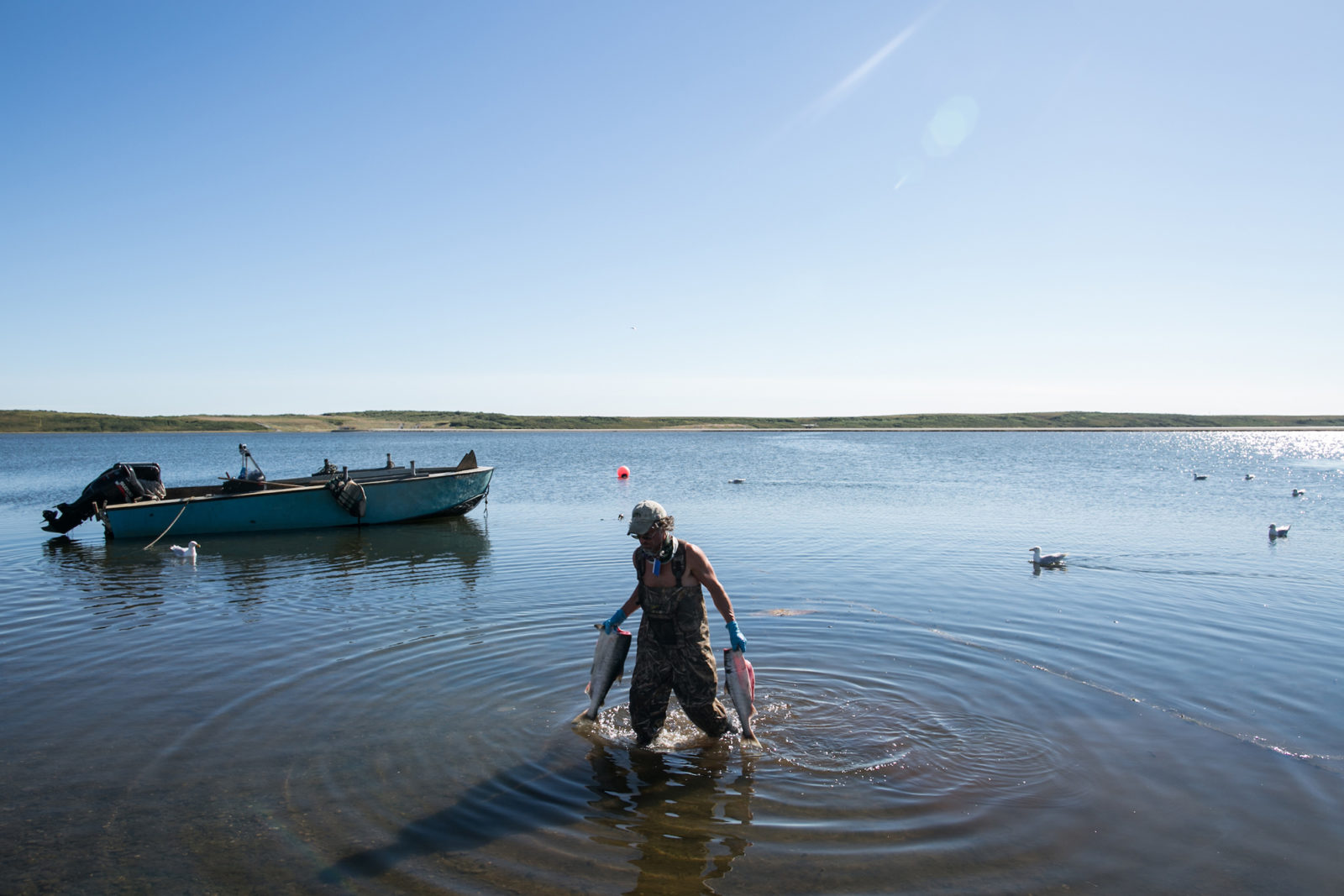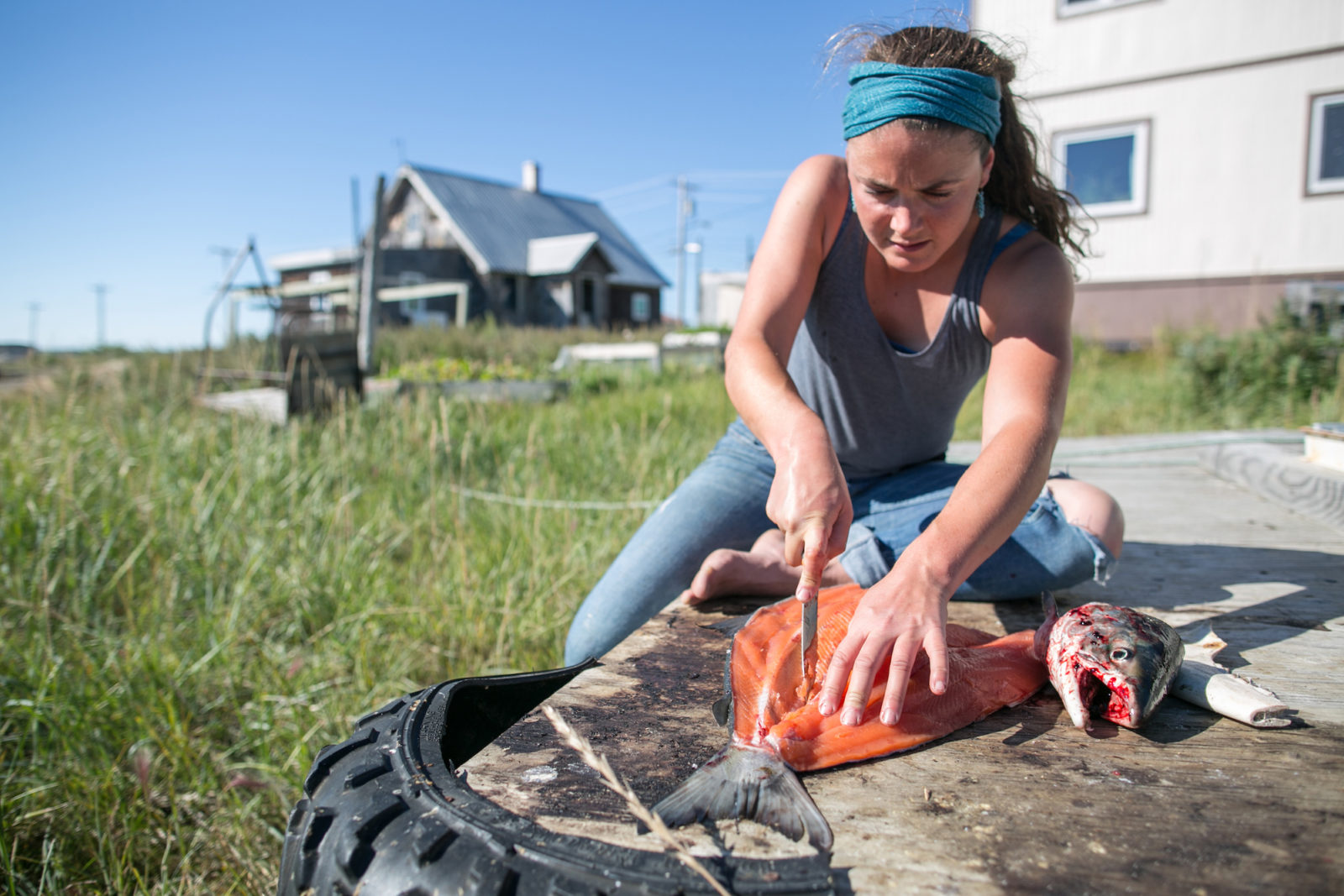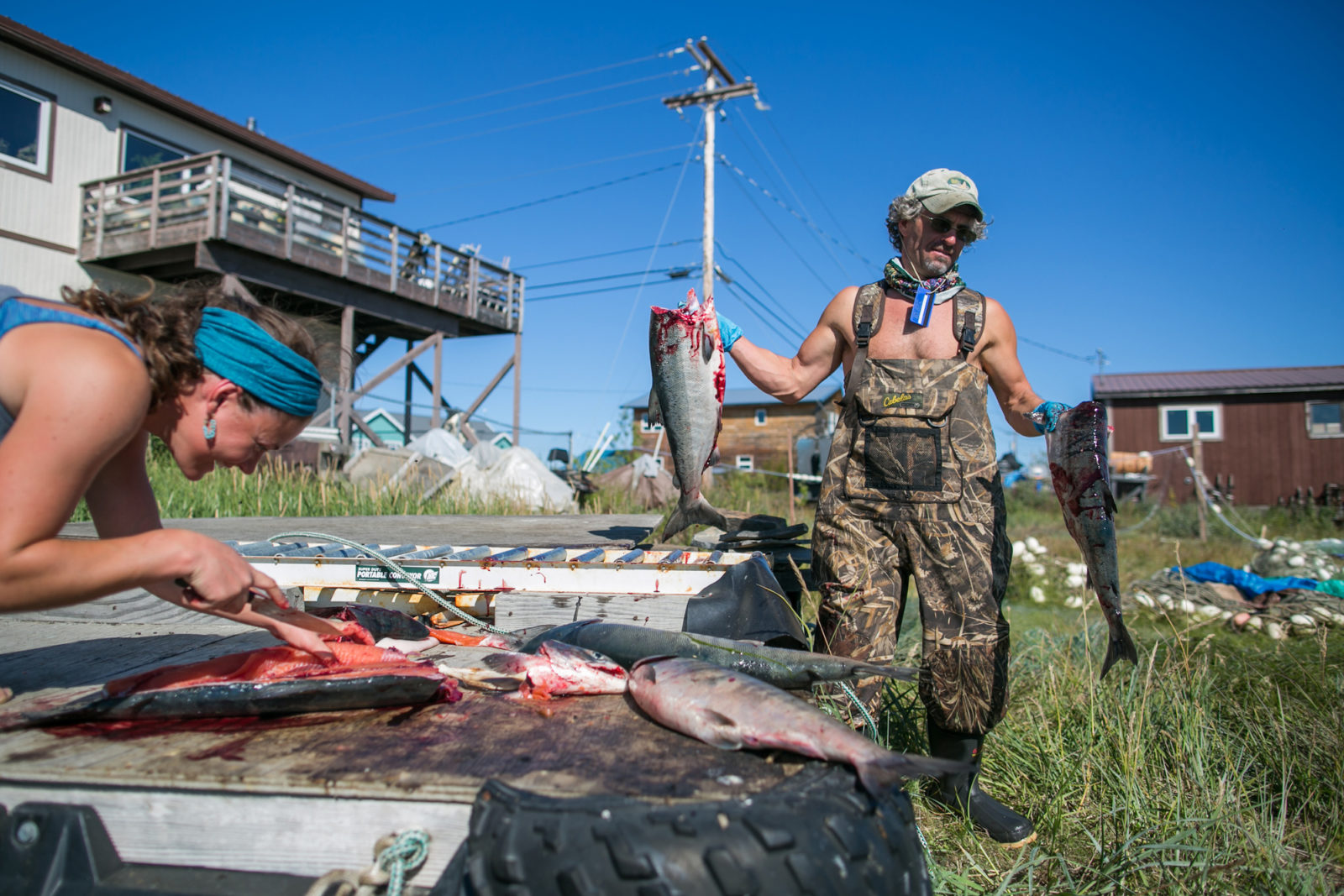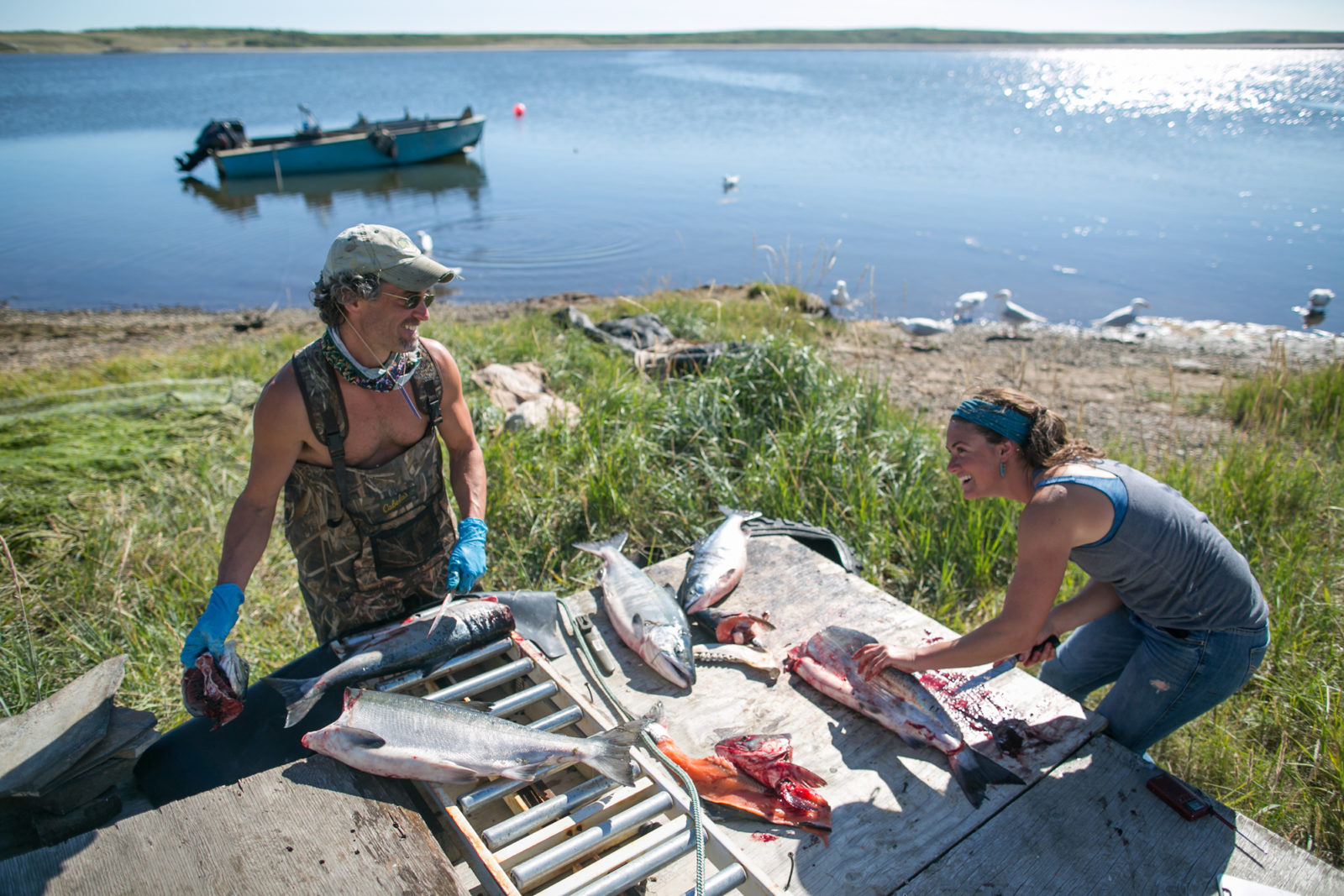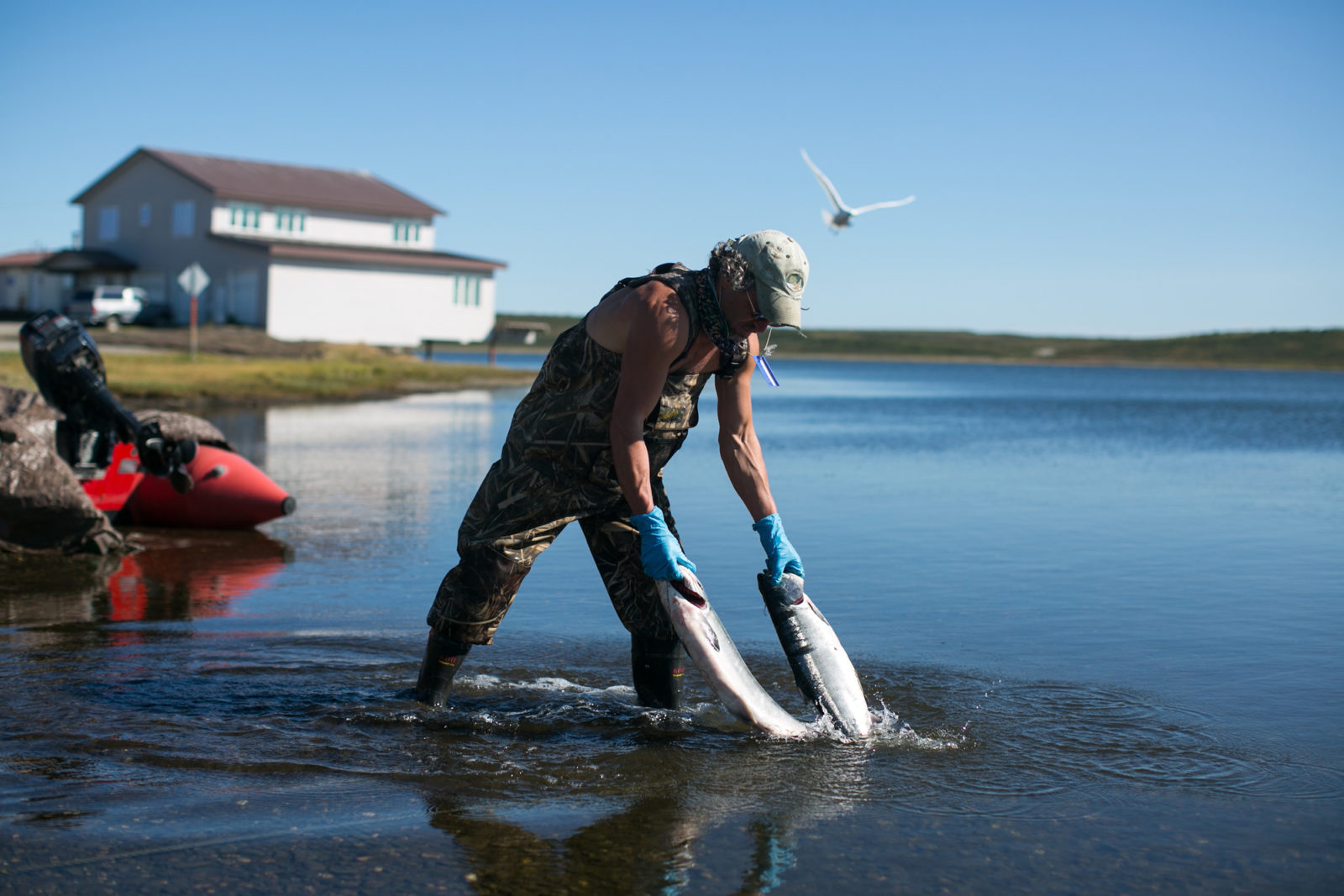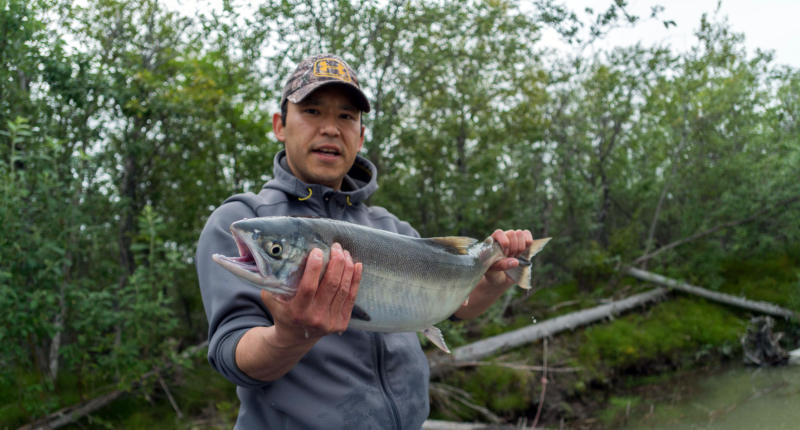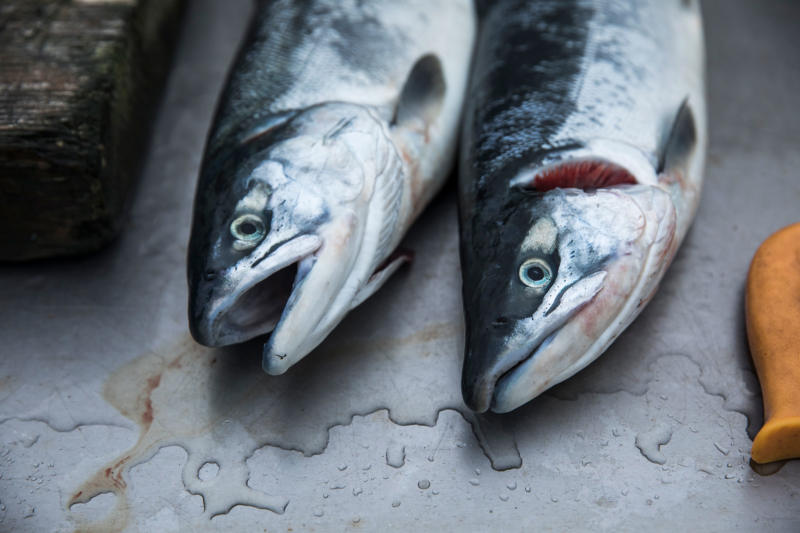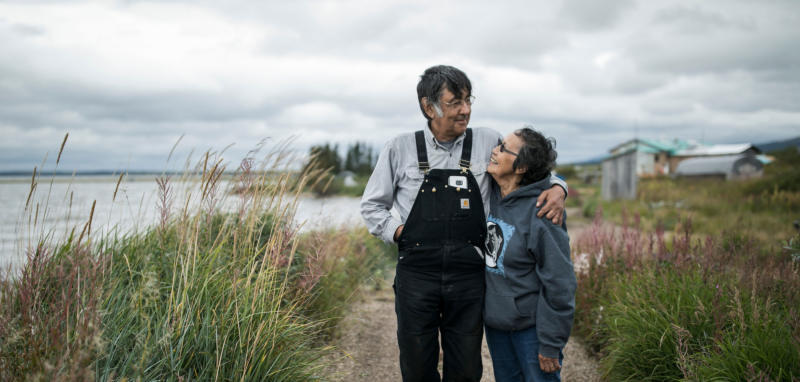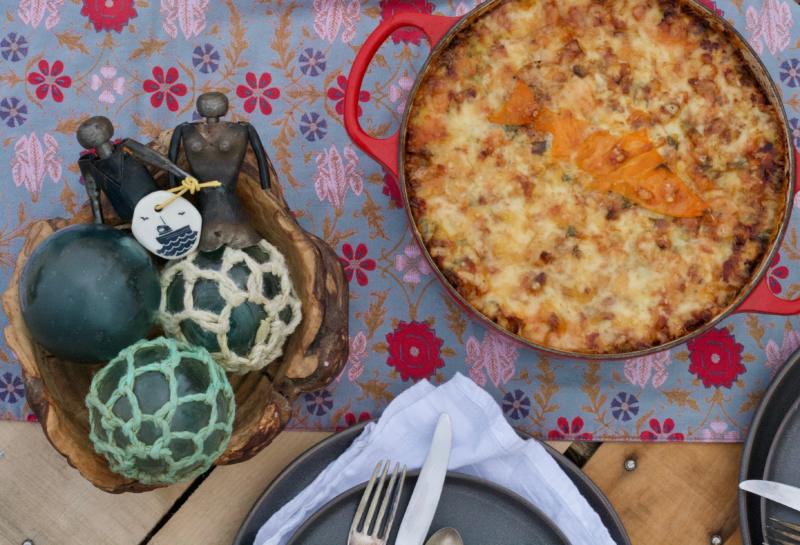Back then, every weekend at the fish camp the fishermen listened to KOTZ AM radio for the openers. Fritz Coleman was the ADF&G biologist who announced his decisions. He cut us back in the mid-1970s from forty-eight-hour periods twice a week, to thirty-six hours, and finally to twenty-four-hour openers. Universally, folks hated him—which is why I remember his name today.
Most of us were from camps and villages, and we had long hours and days to sit in our wind-lashed tents, waiting, while fish passed, some jumping and the rest unseen under the waves. We had no iPhones, no four-wheelers, no video players, very little fresh water. We ate salmon every night unless a loon got in the net, or a porcupine wandered out the grassy spit. We fed flounders to our sled dogs, and we waited. We just wanted to FISH! And when the season ended, most of us packed our boats and went directly home up the Noatak and Kobuk Rivers, and to Kivalina, Deering, Buckland, Selawik, and camps in between—to fish more, for food. Because of the great numbers of fish we killed, we were sure we knew more about salmon than any Outsider biologist on the radio.
Slowly, over the years, from various biologists’ excuses, reports, and reasoning, people learned a side of things we might not have known—bits and pieces, such as how the value of the Japanese yen affected our fish prices, how three-year-old salmon numbers predicted the following year’s return, and five-year-olds could be counted on the year after a large run. We learned about roe maturity and quality, and fall rains washing out eggs, and spring floods flushing out fry. And words like “smolt,” “escapement,” “test-net,” “sonar,” and “aerial surveys.”
Local fishermen were outraged to learn that False Pass boats in the Aleutians were intercepting our chums, as were Korean ships on the high seas with many-mile-long nets. Dips in fish prices didn’t help the mood around Kotzebue Sound. The ‘80s had some good years, but on average our price kept falling, and in the ‘90s it rose briefly—then fell to pennies.
